Fortress was the last “playable” wargame on my 1983 list. I started the year in May 2022 (with Close Assault) and reviewed 48 games (including 4 BRIEFs) so I am losing ground, though I spent a significant amount of time returning to earlier years for one reason or another.
For 1983, I also have close to 30 games in my list currently tagged as unplayable, typically because either the game or more often the manual is missing, but in two special cases because they are “computer-assisted board games” and these are a big no-no when you have an eager two-year-old patrolling the house and randomly picking up anything looking even remotely edible, like a counter representing a British air group.
Before moving to 1984 I feel it is time to look back at the state of the computer wargames in 1983… and at the state of this blog.
A short history of computer wargames so far
In the beginning, there was only Space (1972-1977)
It is always difficult to determine who is “first” in an ill-defined category. The first game on my list is Civil War (1968), a game about war certainly, but barely recognizable as a wargame as we understand it: in particular there is no action/reaction loop (the player inputs a strategy, and the output is directly the result of the battle). High Noon (1970) comes next, but it is not even about war. Then we have Mayfield’s Star Trek (1971), more on this one soon but in any case more a resource management game than a bona fide wargame either. Also in 1971, Peter Langston claims he wrote what could have been a real wargame (“CONVOY – two-player, real-time naval warfare simulation“) but alas it is lost.
This brings us to 1972 with the first games that are for sure “wargames”: Langston’s (also lost) Empire, a mass-multiplayer game usually described as a 4X (“a simulation game, involving both military and economic factors”) and Peyton Carlson and Damian Bonicatto’s WAR, which I consider the first preserved full-fledged wargame, as simple as it was. Wargames remain rare even after 1972. From 1973 to 1977, I have fewer than 10 other non-space wargames in my list, the most ambitious of which probably being Walter Bright’s Empire in 1977.

What people really played in the early 70s was space games. Among these, the most impactful was undoubtedly Mike Mayfield’s 1971 Star Trek (aka SPACEWR), made widely available in 1973 thanks to David Ahl’s 101 BASIC Games. It is hard to convey how important Star Trek (including Bob Leedom’s 1974 “SUPER” upgrade) was in the history of gaming. Suffice it to say that I believe it was the most widely played game of the 70s, that it is still somewhat fun to play 50 years later. Due to how modular it was and to the power of BASIC, it may be still the game which received the most ports and variants in history.
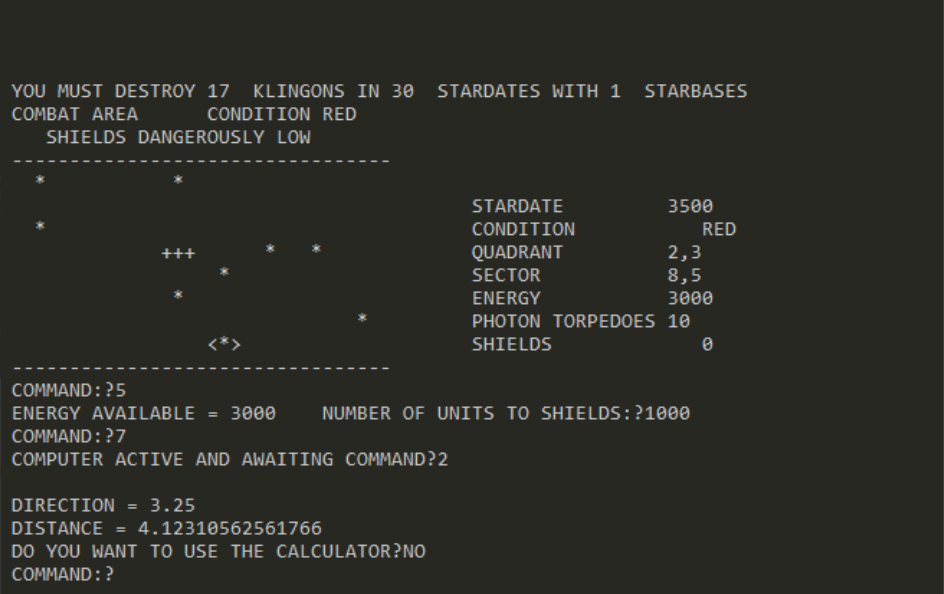
I showcased a later version in my article.
1973 was a pivotal year for mainframe gaming. In addition to Mayfield’s Star Trek, William Char coded his Trek73 (disseminated by the January 1974 issue of the People Computer Company) but it was also the year when John Daleske released the first iteration of the Empire series, not covered here as it is multiplayer-only, but covered at length by the DataDrivenGamer (Empire I to Empire III, Empire IV) And yes, I agree, everyone in the 70s calling their wargames either Empire, Star Trek, War or Convoy is confusing.
The ubiquity of space games in those early years is retrospectively not surprising. First, there was the impact of Star Trek on a generation of nerds starved for bold content on places where no man has gone before. But more than this, the theme was perfect for the limitations of mainframe computers: in particular its relative emptiness meant there was little to draw and no complicated calculation of trajectory or cover to make. For the same reason, the sea was – if we can trust what was preserved – the second most popular theme in mainframe wargaming : Convoy (1971), Warfish (1973), Radar (1977), SUB-F (1977) or Sea Battle (1978).
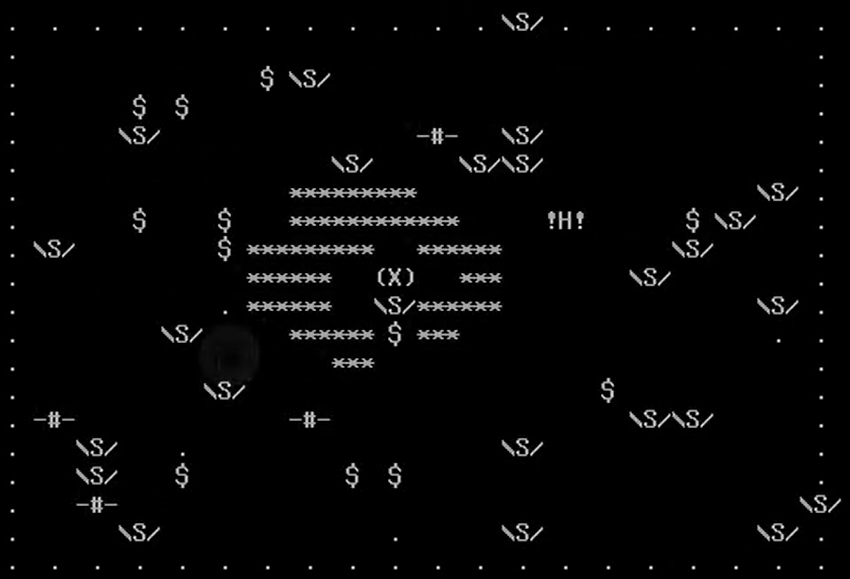
On the other hand, the theme is mostly a pretext. The “submarine” could have been a dragon and the ships could have been knights and it would have been the same game..
The transitional years (1978-1979)
After the release of the 1977 Trinity (Commodore PET, Apple II and TRS-80), nothing changed initially. While the Apple II in particular had impressive graphical qualities, few knew how to leverage them. Moreover, I feel that the mainframe space games, as single-player experiences, were miles above the single-player mainframe experience of other genres. For this reason, while the cRPGAddict’s coverage shows that for cRPGs those years were seminal with Beneath Apple Manor (1978) and of course Dunjonquest (1979) – there was after all no way to port a PLATO game to a PC – the games in my niche were mostly more space games: the Galactic Saga by Doug Carlston, the Starfleet / Invasion Orion games by Jon Freeman (also the author of Dunjonquest), and too many Trek73/Star Trek variants to count.
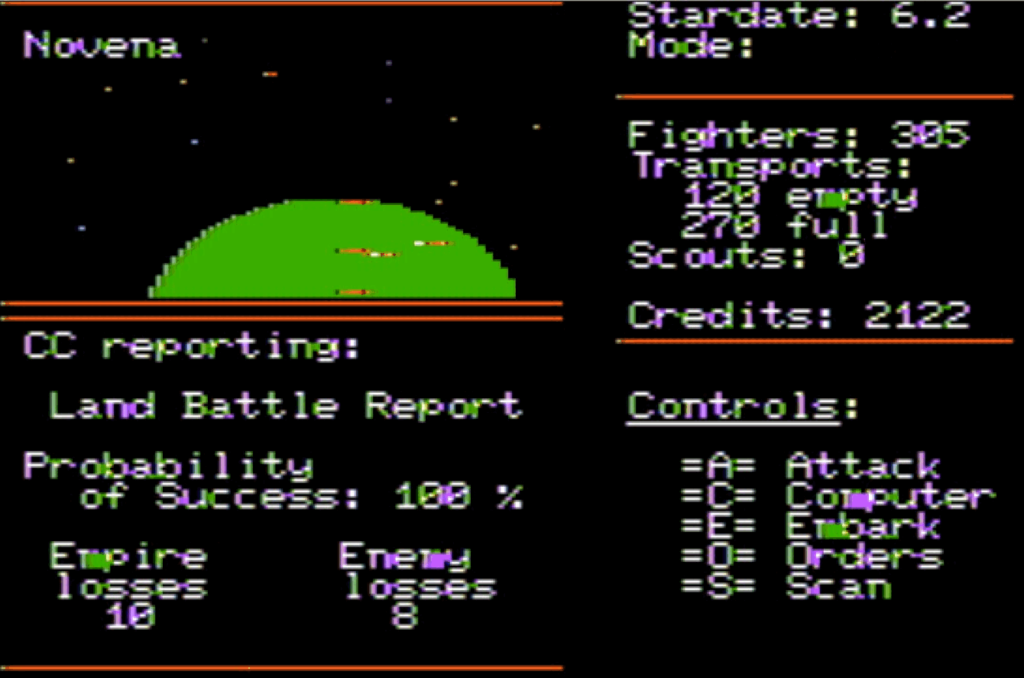
Still, there were isolated efforts to produce real wargames: in Canada, Speakeasy Software released Warlords (1978, multiplayer only). In USA, a physics teacher called Chris Crawford started selling a few dozen of Tanktics copies in 1978, and then in 1979 even fewer copies of his lost first iteration of Legionnaire. In Australia, a math teacher called Roger Keating coded and then sent Conflict (1979) to his Apple User group. In Campbell, California, a flyer left in a game shop by a young college graduate called Joel Billings was found in August 1979 by bored computer veteran John Lyon. The flyer was about making a computer wargame, the kind of career change Lyon was looking for. Wargaming – real wargaming – was conquering the computer.
The boom (1980)
Everything changed in February 1980 with the arrival of Billings and Lyon’s Computer Bismarck. The first game by Strategic Simulations Inc. (SSI) would be pivotal in the history of not only computer wargames but also more generally computer gaming. For the first time a game was not sold in a cheap Ziploc, but in a professional-looking box with quality components – including maps, reference cards and grease pens. It was designed to appeal to tabletop wargamers, and also of course to justify the hefty $60 price, but it ended up setting an industry standard for everyone. SSI released 4 more full-fledged wargames the same year: the squad tactics game Computer Ambush, the air tactics game Computer Air Combat, the battlefield tactics game Computer Napoleonics and finally the Computer Conflict bundle.
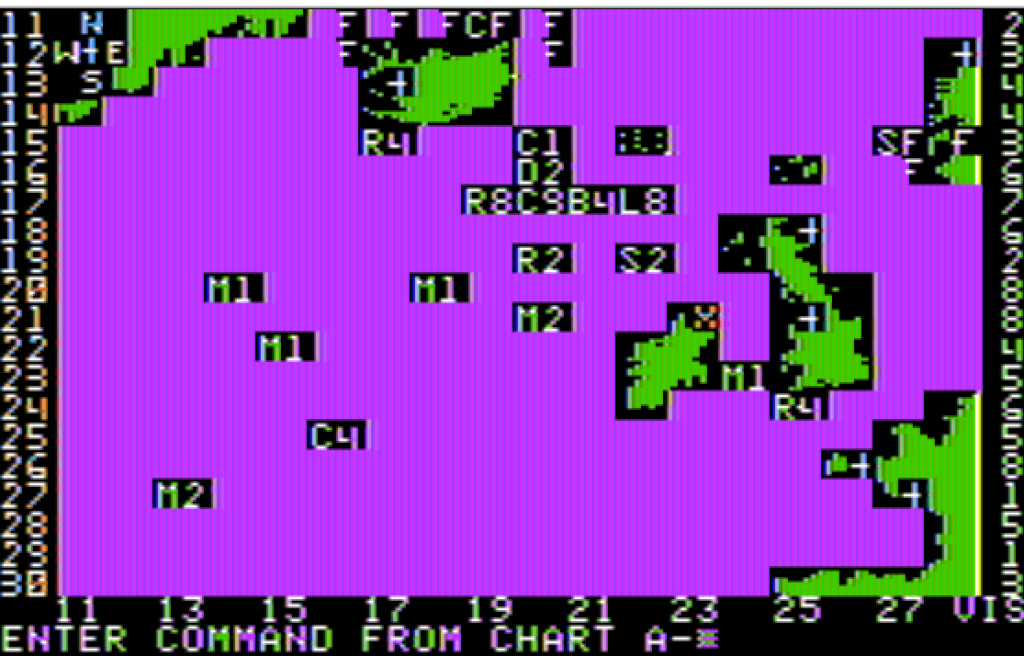
Meanwhile, Avalon Hill also entered the computer market the same year with, in particular, North Atlantic Convoy Raider and Midway Campaign. While in real-time, the games lacked depth and failed to convince. After having failed to catch the train of tabletop RPGs, Avalon Hill was failing to catch the train of computer wargames. For Avalon Hill, the following years would be the history of their attempt to beat the newcomer SSI – and never succeeding.

Among the isolated efforts, the most notable are probably the 3 David Landrey games on TRS-80: Battle of the Bulge: St Vith, Battle of the Bulge: Bastogne and D-Day: Invasion of France. As for the theme, the Second World War dominates for the first time, with the Hunt for the Bismarck represented twice.
Eastern Front 1981.
In wargaming, 1981 is notable for two facts: the domination of SSI on one hand, the Eastern Front 1941 meteor on the other hand.
I don’t think there was any other year when one company dominated the wargaming market as much as SSI in 1981: out of 20 games that I could construe as wargames – many of them trivial or multiplayer only – 6 come from SSI and all of these are deep and playable in solitaire. SSI can count on a cadre of solid designers: Roger Keating on Operation Apocalypse and the superb Southern Command, David Landrey (who associated with Chuck Kroegel in the Tactical Design Group) on the stale but successful Battle of Shiloh and Tigers in the Snow and, in another genre, Dan (Danielle) Bunten with Computer Quarterback.
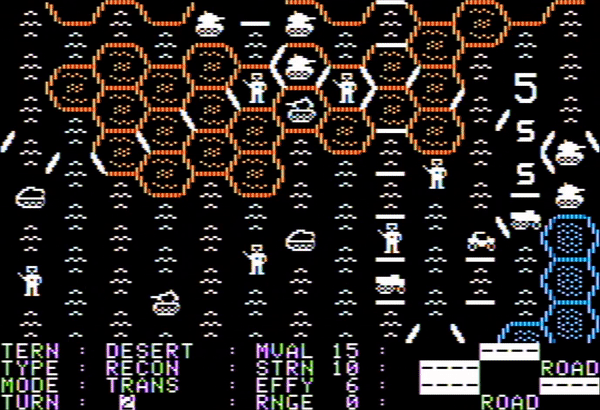
For SSI, the competition does not come from Avalon Hill, absent that year, but from Chris Crawford and his Eastern Front 1941. Eastern Front 1941 is to wargaming what perspective was to Western art: there is a before and an after, and while the “after” was still rarely good by modern standards, the “before” always looks hopelessly dated. Eastern Front 1941 innovated with its streamlined UX, its smooth scrolling and its AI that “thought” while you were playing instead of making you wait. With Eastern Front 1941, Crawford proved that good computer wargames did not have to be good tabletop wargames “on computer”, quite the opposite. This doctrine collided with everything SSI had done so far: its products were either unofficial ports of existing tabletop games (Computer Bismarck, the Shattered Alliance) or games that felt like the port of a board game that did not exist.
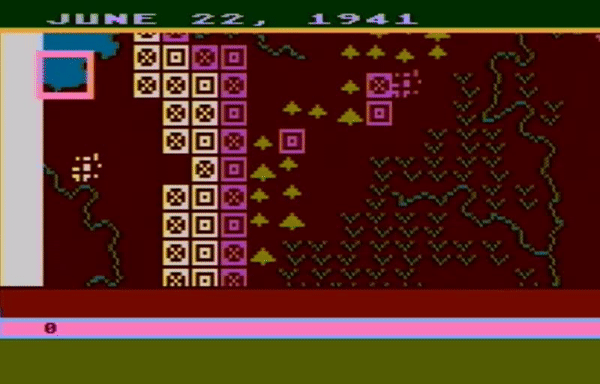
Outside of the North American wargaming market, 1981 was the beginning of Japanese computer wargaming with Koei’s Battle of Kawanakajima, and a particularly important year for both cRPGs (Ultima I and Wizardry) and arcade (Donkey Kong, Frogger).
The road to maturity (1982)
In North America,1982 does not have the seminal releases of 1980 and 1981; instead it witnesses the dissemination of the learnings of Eastern Front 1941. The overall quality of the wargames increases thanks to a growing number of developers turning to Assembler and the growing availability of graphical tools. Three games stand out:
- the first RTS on PC: Dan Bunten’s Cytron Masters,
- the first monster wargame: Gary Grigsby’s Guadalcanal Campaign,
- the forgotten tactical game Galactic Gladiators by Tom Reamy, first of a lineage that will leave wargaming and lead to the SSI Gold Box games,
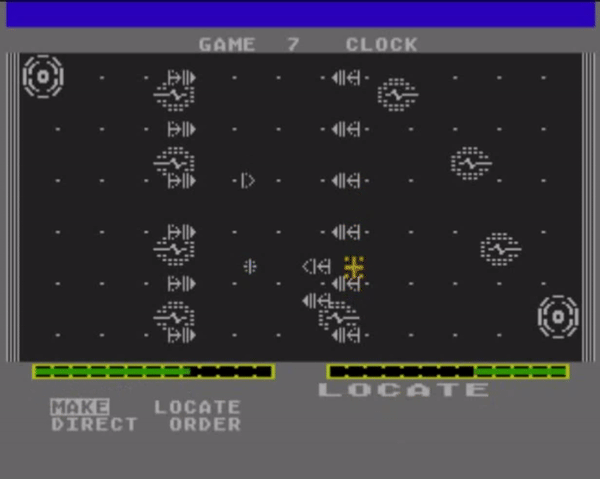
Avalon Hill returns to computer wargames with some ambitious titles: Bruce Keithledge’s Dnieper River Line and the new edition of Crawford’s Legionnaire, though Avalon Hill’s best 1982 game for the modern player may be Britt Monk’s forgotten VC. Other US companies also release wargames, but none stand out.
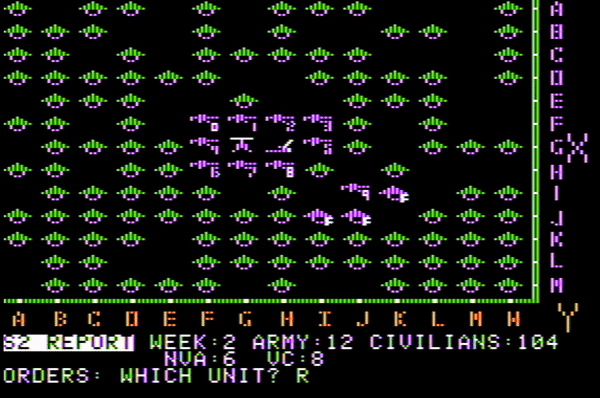
Another significant shift in game design is the quasi-disappearance of the “make your own scenarios” approach that dominated 1980 (eg Computer Air Combat) and still survived 1981 (eg Torpedo Fire). With the exceptions of Legionnaire and the space game The Cosmic Balance, all 1982 wargames shipped with fixed scenarios, even if they can be edited or otherwise customized. Generally speaking, the experiments of the early years become rarer. The size of the hexagons standardizes around what Keating proposed in Southern Command.
Innovation in 1982 came from the UK with the explosion of British home computing that followed the release of Sinclair’s ZX81 in 1981 and ZX Spectrum in 1982. Companies such as Molimerx and specifically MC Lothlorien started to release small experimental wargames; none of those games stand out at this point in time, but things are about to change.
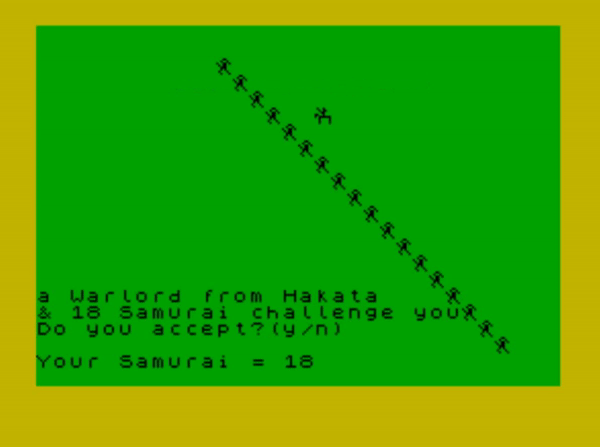
Outside of computer wargaming, 1982 looks a lot like 1981 for cRPGs (the most recognizable titles of the year are Ultima II and the first scenario disk of Wizardry), but is a great year for arcade with for instance Pole Position, Joust, Q*Bert and also, by the end of 1982, the game that even today’s gamers know: E.T.
A change of scope (1983)
1983 is the year when Grand strategy and (space) 4X arrived on PC. Grand strategy, a genre that combines warfare, diplomacy and economic management, is represented by three very different games:
- Bruce Keithlege’s Geopolitique 1990, by far the strongest on the military side,
- Koei’s Nobunaga’s Ambition, whose structure is the most recognizable to modern gamers,
- Chris Crawford’s Excalibur, perhaps the best of them all, certainly the most ambitious, but whose wings were clipped by the demise of Atari,
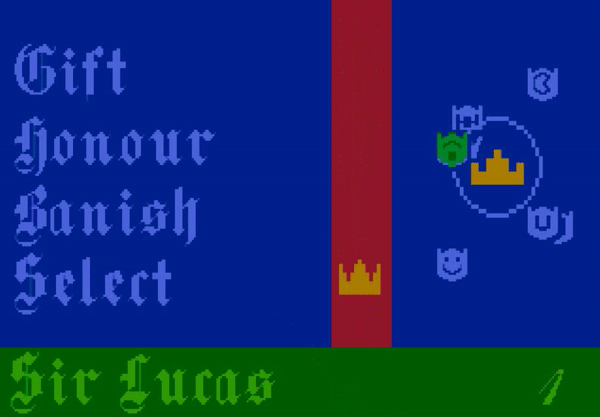
For Space 4X, one game becomes the Ur-title that will set up some of the conventions of the sub-genre: Roger Keating and Ian Trout’s Reach for the Stars.
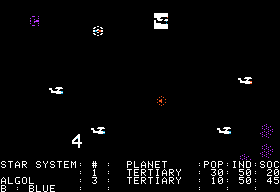
Generally speaking and except for Gary Grigsby’s production, games become easier to play thanks to the better graphics and UX but also active design decisions to streamline: this is particularly evident when comparing the 1983 Eagles (the first game with a “campaign mode”) to the 1980 Computer Air Combat, or David Landrey’s 1983 Knights of the Desert to his earlier efforts. Avalon Hill significantly closes the gap with SSI in terms of quality, with Close Assault and Parthian Kings as its most interesting 1983 releases. Electronic Arts appears on the market and action-strategy gets its first strong title with Free Fall Associates’ Archon. Air combat simulation specialist Sid Meier fails to enter the wargaming market with NATO Commander.
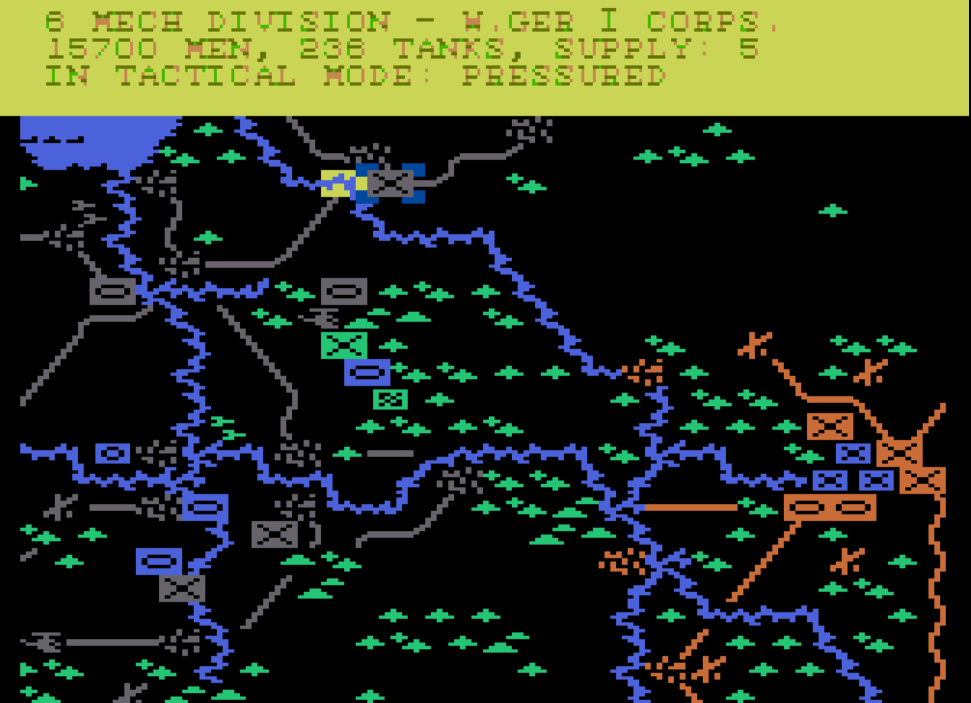
The number of British and Japanese wargames explodes, but I could only play the former. They generally propose a shorter experience than their American counterparts, but alas the quality generally lags behind. In my opinion, Ken Wright’s Pacific War is the best of the lot, though Stonkers is the most remembered.
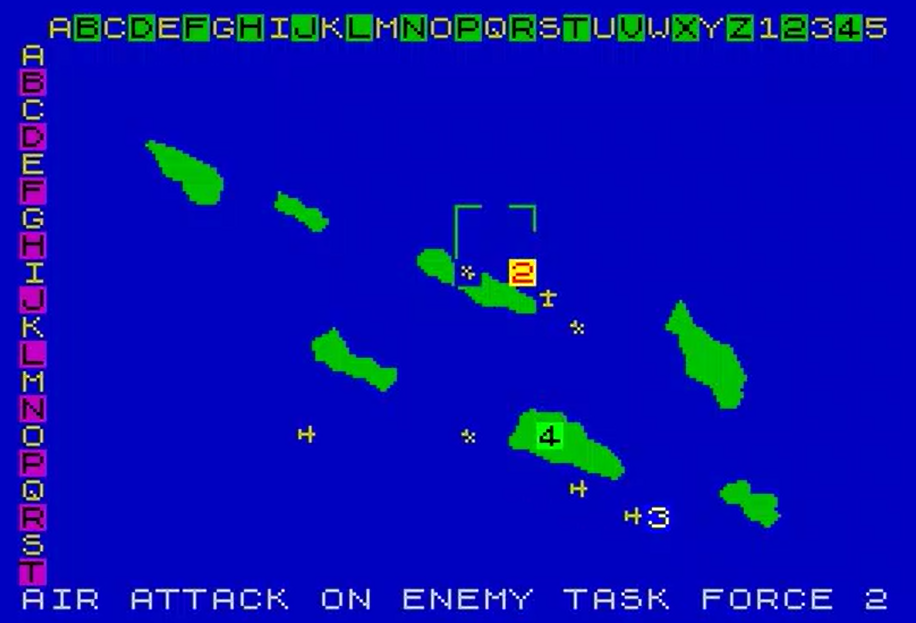
For cRPGS, 1983 looks a lot like 1982 which looked a lot like 1981 with the most recognizable games of the year being Ultima III and the third expansion of Wizardry. Unbeknownst to cRPG gamers, the next step to the SSI Gold Box games is released: Galactic Gladiators‘ sequel Galactic Adventures, now clearly in RPG territory, and just as unsuccessful as the first opus. Some people find the time to play Moria.
As for the rest of the gaming market, anyone with at least one computer and one sibling rejoice as Dan Bunten’s M.U.LE. is released. Despite the video game crash, arcade players can enjoy plenty of games, including Alley Cat or Tapper for those I played as a kid.
Where we stand, and what to expect in 1984
As we’re starting 1984, let’s look back a bit at what has been released so far
Let’s start with the themes we have seen from 1980 to1983:

- While space games dominated the 70s, they stabilized at 5-10 games a year (for those I consider wargamy enough, but not Star Trek-clones either). This is good news, in general I don’t love space games and I don’t feel they should be a large part of the blog,
- World War Two is the most popular theme by war. If we focus on WW2 games, the Pacific War is the most frequent sub-theme, and specifically the Guadalcanal Campaign (covered in 5 games), followed by the Battle of Britain (4 games). German pocket battleships in the Atlantic are also popular: 3 games are dedicated to the Bismarck and 2 games to the Graf Spee.
I tried to have the same chart for genres of wargames, but it is hard to read. In short, the most popular genre is what I call “Combined Arms Tactics” (think Germany 1985), but naval warfare, whether tactical or strategic, is strongly represented with 18 games in total. This is not surprising, as a central issue in naval warfare is detecting the enemy, which is hard to represent on tabletop. All the genres of wargaming I can think of are represented, but some only once, for instance Siege Warfare (with Jerico 2) or Time Strategy, a genre I had to list specifically due to Julian Gollop’s bizarre Time Lords and that I don’t expect to populate often.
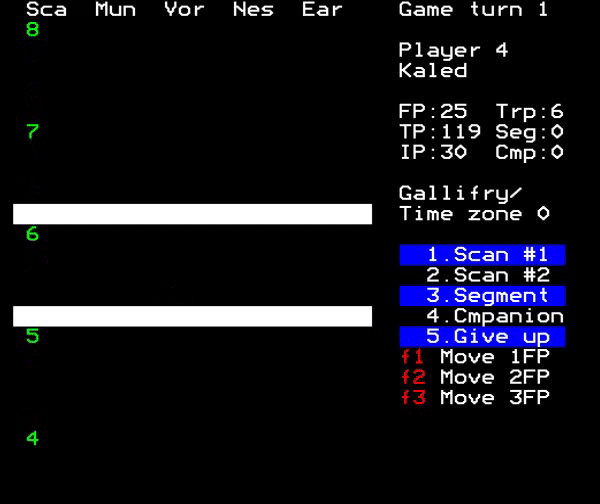
My current list for 1984 includes more than 80 games (compared to 51 games for my final “playable” 1983 list); it seems a lot but I am bound to remove a good number of them after I find out they are lost / multiplayer only / not wargames after all. The most recognizable titles are:
- Mike Singleton’s Lords of Midnight and its sequel Doomdark’s Revenge,
- Broderbund’s Ancient Art of War,
- Dan Bunten’s Seven Cities of Gold,
- Julian Gollop’s Rebelstar Raiders, multiplayer but I have to cover it anyway,
My list is getting more international, I have to investigate games from France, Italy, Spain and even one game from Yugoslavia (“Podmornica“) that I eventually discarded for being a clone of Sea Battle. About one-third of my list is British, so these should be short and occasionally sweet.
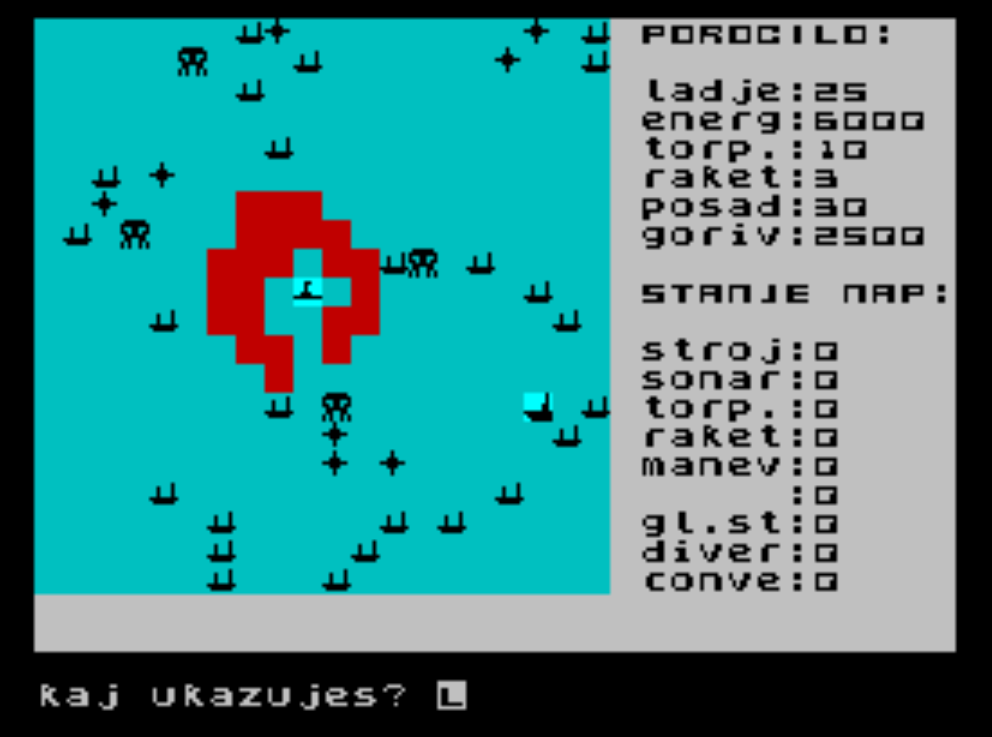
Some final remarks about the blog
- I have never been satisfied with my rating system, but I think I finally found a system that satisfies me. Games below a threshold will be either obsolete or totally obsolete, anything above this threshold will receive one star or more. The advantage of this system is that there is no upper limit; as the quality of the games increases, the number of stars I will give to the top game will increase. I will update my ranked list with this new system in the coming days, I will not change the articles already written.
I have to thank commenters Goldfinch and Gubisson for their feedback on this topic. - My master list is finally available. It is only “complete” (but not fully investigated) until 1985.
Here I thank commenter LanHawk for his significant help in maintaining it. - The forum has some significant issues for users trying to register – apologies for that, it is on my to-do list. Meanwhile, if you want to register (for instance to play in multiplayer sessions), the best way to do so is to send me an email.
And now, let’s move to 1984. We will start in the next article with Robert Erskine’s Pearl Harbour. Hey! Look! It is the Pacific War again!
7 Comments
Great read. I’m particularly interested in the Gollop offer, apparently Rebelstar is so good people are up making remakes of it in the year 2023 (Archrebel Tactics). Previous Gollopian efforts were…. middling, lemme say. Also Italian games? Pity it appears a single entry of unknown heritage. I’ll dig around if I find something in nativespeak.
And of course, will our courageous rat scribe ever find a Pacific game where he can play as the crafty Japanese?
I think that this kind of game is Daisenryaku.
https://en.wikipedia.org/wiki/Daisenryaku
Still going strong since 1985. ! Only 3 games are released officialy in west on english!
I also found a game called ルンガ沖夜戦 in 1983, by Koei. I am sure it lets you play as the Japanese. Alas, no manual.
It covers the Battle of Lunga Point, so Guadalcanal once again…
Very interesting, from the videos I recognize some patterns I’ve seen in Japanese strategy games I’ve played. It seems it had quite the influence.
I can hardly wait for 1987 and the Ancient Art of War at Sea.
Well, it was one of the favorite games of my youth, so I am looking forward to it myself.
I tried to relive the feelings of AAoWaS in more modern game, but either I am jaded, or no other game hit that sweet spot in 30+ years.
Here’s to many more years!